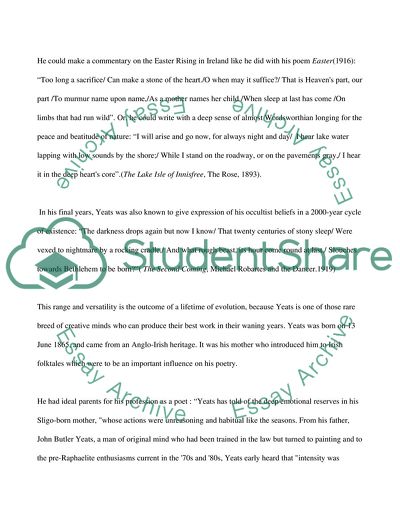Cite this document
(W. B. Yeat's: His Poetry and Thought Essay Example | Topics and Well Written Essays - 1500 words, n.d.)
W. B. Yeat's: His Poetry and Thought Essay Example | Topics and Well Written Essays - 1500 words. https://studentshare.org/literature/1707520-the-work-of-poet-william-butler-yeats
W. B. Yeat's: His Poetry and Thought Essay Example | Topics and Well Written Essays - 1500 words. https://studentshare.org/literature/1707520-the-work-of-poet-william-butler-yeats
(W. B. Yeat'S: His Poetry and Thought Essay Example | Topics and Well Written Essays - 1500 Words)
W. B. Yeat'S: His Poetry and Thought Essay Example | Topics and Well Written Essays - 1500 Words. https://studentshare.org/literature/1707520-the-work-of-poet-william-butler-yeats.
W. B. Yeat'S: His Poetry and Thought Essay Example | Topics and Well Written Essays - 1500 Words. https://studentshare.org/literature/1707520-the-work-of-poet-william-butler-yeats.
“W. B. Yeat'S: His Poetry and Thought Essay Example | Topics and Well Written Essays - 1500 Words”. https://studentshare.org/literature/1707520-the-work-of-poet-william-butler-yeats.


